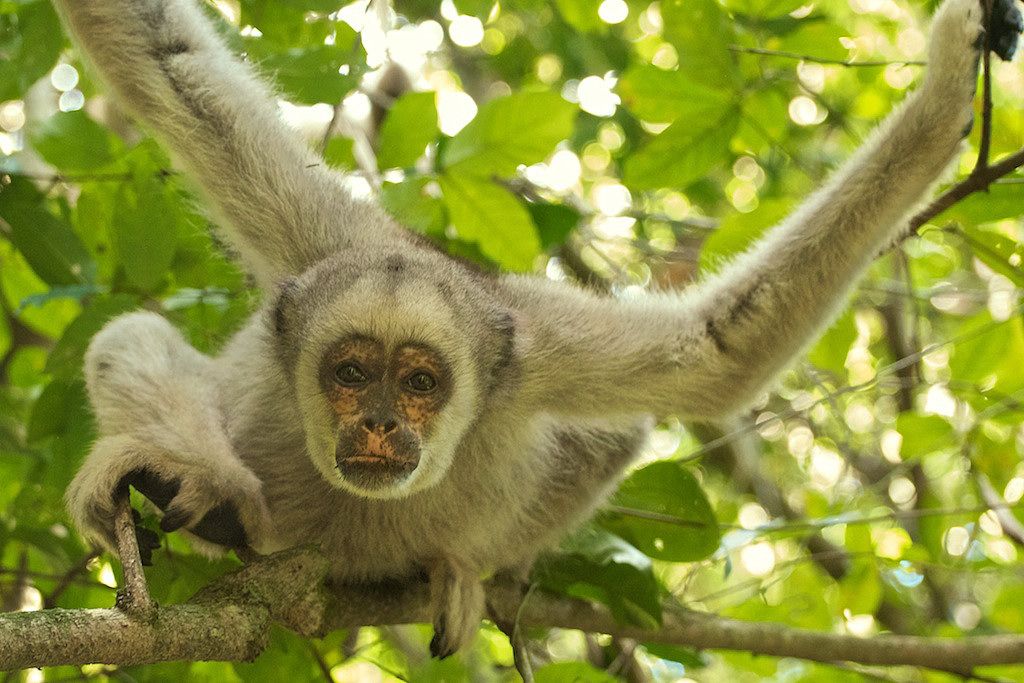About
A section of preserved Atlantic Forest in the Brazilian state of Minas Gerais is one of the few remaining habitats for the critically-endangered muriqui. The largest and heaviest monkey native to the Americas, the muriqui is largely folivorous-frugivorous, meaning that it feeds mainly on the leaves and fruits of certain trees. The large and incredibly strong tail of this primate is prehensile and is used with great dexterity as a fifth limb to swing through the rainforest canopy.
Often called the “hippy monkey,” the northern muriqui is a primate with a highly unusual social ecology that is largely egalitarian. Indeed, incidences of serious violence between individuals have never been reported—a rarity amongst primates.
The name muriqui is derived from the indigenous Tupi-Guarani word mur'iki which means “those who swing through the forest, and come and go.” The monkey is also known in Portuguese as the mono carvoeira, which means the “charcoal monkey.” The dark pigment of their faces reminded colonial-era settlers of the soot-covered faces of charcoal burners.
Historically, the muriqui was a plentiful species of the Atlantic Forest of southeastern Brazil, but the species experienced a drastic decline after the arrival of the Portuguese. The colonists severely deforested this biome in order to harvest timber and for the mass agricultural conversion of the land for sugarcane.
Today only 1,100 of these critically endangered monkeys remain in scattered populations in the states of Minas Gerais, Rio de Janeiro, Bahia, and Espirito Santo in fragments of forest that are surrounded on all sides by agricultural plantations and cattle pasture. However, the vast majority of the population of the species occurs within Caratinga, making it an area that is critical for efforts to conserve the species in the wild.
The muriqui population that occurs within the reserve was saved from local extinction during the late 20th century by the namesake of this protected area, Feliciano Miguel Abdala, a coffee planter who purchased the land in the 1940s. Abdala, was a man way ahead of his time and left a significant amount of Atlantic forest cover standing on his estate, as he felt great sympathy for the plight of the muriqui.
Many scientists have come to the reserve to study the ecology of the Northern muriqui. Most notable amongst these is Dr. Karen Strier, who has spent almost 40 years conducting field studies on the species. Strier was the first to identify the unique egalitarian social ecology of the species. Her 1992 book Faces in the Forest chronicles her experiences studying these animals and the efforts to conserve them.
The Northern muriqui are not the only notable residents of the reserve—other rare primates such as the black horned capuchin, the brown howler monkey, and the critically endangered buffy-headed marmoset can also be seen in this part of the forest.
Related Tags
Know Before You Go
In order to see the reserve and take a guided tour to see the muriquis and other monkey species, it is essential to book a visit which can be done on the preserve's website.
The reserve is open from 8 a.m. to 5 p.m.
Please do not litter or attempt to feed or touch the monkeys during your visit.
Community Contributors
Added By
Published
March 25, 2022






















